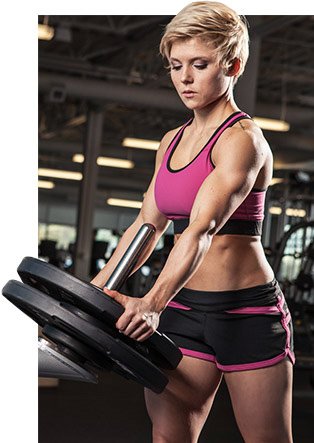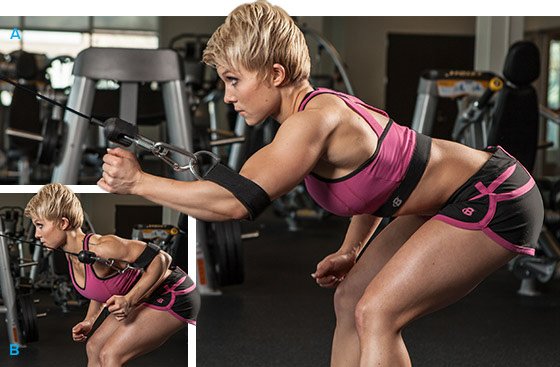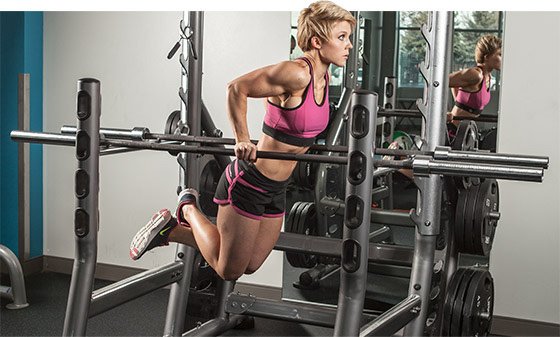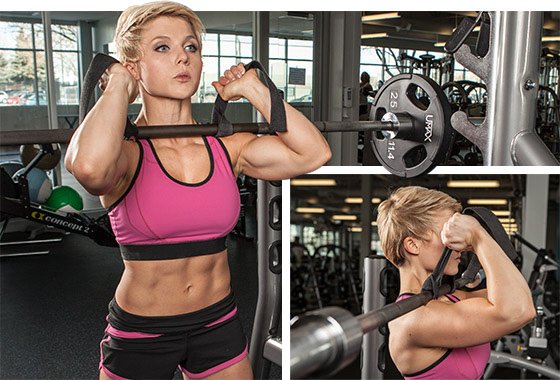Effective training is all about getting the most out of using the equipment you have. You can dream all you want about the specialized gear you see lifters and athletes using in online videos, but until you strike it rich, they're about as real as light sabers.
So are you out of luck? Hardly! The weight room is an ideal laboratory for crafting "hacks," which are clever, non-obvious ways to solve problems and increase efficiency. In action, they can easily mean the difference between an airtight 45-minute workout and an inefficient hour or more. They can also help you stay uninjured, work around an injury you have, or get stronger in a way you thought was beyond your options.
Sure, you may already know about some of these hacks, but keep in mind that many people haven't heard of or tried them. So instead of commenting "I've known this for years" or "every serious lifter should already be doing this," share some of your own hacks and tricks that can help the community!
Think of it this way: There's nothing more frustrating than waiting while someone else uses the equipment you need, so when you share your knowledge, the time you save may be your own!
How to Strip Plates Off the Bar After Heavy Lifting

Our first hack comes from my man Bret "The Rear Admiral" Contreras. It involves a simple and easy way to drag plates off the bar after doing heavy deadlifts or hip thrusts, a cumbersome task that often requires lots of extra time and energy. Take a minute to watch the life-changing video below.
Did I just hear the sound of your palm hitting your forehead? Maybe it was a glute-smack. In either case, this technique may be common knowledge to many serious weightlifters, but here's a newsflash: Serious lifters aren't the only people doing deads and hip thrusts anymore. That's a good thing—a great thing, in fact.
Iron game legend Richard Sorin told me, "Athletes are not in the gym to be weightlifters. They're there to be athletes made stronger." This applies to people with physique and general fitness goals, as well.
All of us can benefit from building stronger posterior chains, and now we can shave off a few precious seconds when we do it.
How to Strip Plates Off the Bar
Watch The Video - 00:50
How to Rack Weight Plates
I've been all over the world and seen hundreds of weight rooms and fitness facilities. Unfortunately, the way almost all of them have their weights plates set up simply doesn't make sense. And when I say, "doesn't make sense," I mean that it puts all of their clients, athletes, coaches, and members at a higher risk of injury.
If you're a gym owner, work at a training facility, or just want to rack weights in the safest and most considerate way possible, try this method. If you've ever tweaked your back before even setting up under a barbell, you know how important simple solutions like this can be!
Your weight room is set up wrong!
Watch The Video - 01:18
How to Stack Plates on a Sled or Prowler
If you use a sled, you know it can be a real pain in the butt pulling the plates off the vertical weight-retaining bars. If you're not careful, it can be an even bigger pain in the finger. It doesn't have to be!
All you have to do is load a 5-pound plate first, then alternate 45-pound plates with 5-pound plates afterward. Not only does this make it easier to grab and pull off the 45s, it also gives you nice and simple 50-pound increments to monitor your resistance.
Feel like you've seen this technique before somewhere? As some physique training enthusiasts know, this sandwich technique is also great for loading and unloading the seated calf-raise apparatus.
Use Ab Straps for More Than Just Hanging Leg Raises
If an injury affects your grip, it doesn't have to mean the end of your upper-body training. You can use ab straps as a handle option even if you're unable to hold anything in your hands.
For example, you can use them to perform bent-over rows at the cable stack. Sure, it's not the full range of motion you'd get with a dumbbell or cable handle, but it's far better than doing nothing at all. You can also keep up your rotational power by using the same straps for a rotary cable pull.

Bent-over cable rows
Give either of these moves a try, and you'll start to see what a versatile tool these can be. Let me know in the comments if you have success using them for anything else.
The bigger lesson here is that an injury, joint pain, or limitation doesn't have to cancel your workout. This was the focus of my Joint Friendly Strength Training DVD set, which includes more than 100 innovative exercises for building muscle and strength while sparing your joints and working around wounded knees, shell-shocked shoulders, hand and wrist limitations, and a bad back.
Use Barbells As a Personalized Dips Station
A common knock against strength training machines is that they don't allow us to follow our "natural" path of movement. Every user has to set up the same way, with the same hand width, foot placement, and so on. But the same people making this complaint happily head over to the dip station, where—you guessed it—they put their hand placement at the same width, regardless of their respective shape and size.
You may think there's no way to adjust the width of your hands on a parallel bar dip station, since the handles are already preset at a specific width—and you're right! Even the adjustable parallel bar dip stations only have one adjustment, where you rotate the handles either farther apart or closer together. This still leaves out plenty of people whose ideal placement would be in the middle or outside those two positions.

Parallel bar dip
Don't try to fit yourself to a movement. Make the movement fit you by abandoning the dip station and performing dips in a way that's fully adjustable to every individual. All you need is a squat rack and two empty barbells. Set the safety pins a little higher than waist height, set up between the barbells, and start dipping.
If you're worried about the barbells rolling when you perform the dips, don't be. They won't budge once you put your weight on them. That said, as with every other exercise, there is always some idiot factor involved, so don't do anything you know may push your luck.
Wrist-Wrap Front Squats
Just when I think that using wrist straps to perform front squats is a hack that everyone knows, I find someone who has never seen this technique before. So it's definitely worth sharing—especially if it eliminates your best excuse not to do front squats!
This trick is simplicity itself. If you feel like front squats bother your wrists, or you are simply unable to get your wrists into the proper position, loop the wrist straps around the bar (as shown in the photo below) and hold on tight as you squat.

Wrist-Wrap Front Squats
When using wrist straps to perform front squats, keep upward tension on the straps by pulling them vertically throughout the exercise. Keep your elbows at a roughly 90-degree angle to your torso in order to maintain the bar in proper "racked" position. Otherwise, the same cues that apply to regular front squats apply.
Use a Trap Bar as A Four-Way Neck Machine
I'm a big fan of neck-strengthening exercises, especially for athletes competing in impact sports such as rugby, football, grappling, boxing, Muay Thai, and MMA. An effective tool for strengthening the neck is a four-way neck machine, but it's rare to see one outside of specialized training centers. Even such centers struggle to find the space and budget for this machine.
No neck machine? No problem! In this video, Richard Sorin shows you how to turn a trap bar into a four-way neck machine:
DIY Neck Machine and Shoulder Press
Watch The Video - 02:39
As you can see in the video, this technique works best with a trap bar that's long enough to be placed in a rack, like the Sorinex Diamond Bar. If you've got a good one, you'll find that, like ab straps, it's a great tool that can be put to many uses in the gym.

